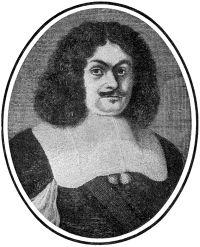Planning worship?
Check out our sister site, ZeteoSearch.org,
for 20+ additional resources related to your search.
- |
User Links
Person Results
Melchior Teschner
1584 - 1635 Person Name: M. Teschner Composer of "TESCHNER" in American Lutheran Hymnal Melchior Teschner (b. Fraustadt [now Wschowa, Poland], Silesia, 1584; d. Oberpritschen, near Fraustadt, 1635) studied philosophy, theology, and music at the University of Frankfurt an-der-Oder and later studied at the universities of Helmstedt and Wittenberg, Germany. From 1609 until 1614 he served as cantor in the Lutheran church in Fraustadt, and from 1614 until his death he was pastor of the church in Oberpritschen.
Bert Polman
Melchior Teschner
Herman H. Brueckner
1866 - 1942 Person Name: H. Brueckner Translator of "Preserve In Fullest Measure" in American Lutheran Hymnal Born: March 11, 1866, Grundy County, Iowa (birth name: Herman Heinrich Moritz Brueckner).
Died: January 25, 1942, Hebron, Nebraska (funeral held in Beatrice, Nebraska).
Buried: St. Paul’s Lutheran Cemetery, Waverly, Iowa.
After ordination in 1888, Brueckner pastored in Illinois, Michigan, Kentucky, and Wisconsin. He later moved to Iowa City, Iowa, and received his Bachelor of Arts degree from Iowa State University in 1917. In 1926, he joined the faculty of Hebron College in Nebraska. In 1938, Wartburg Seminary, Dubuque, Iowa, conferred an honorary Doctor of Divinity degree on him. He retired as professor emeritus from Hebron College in 1941.
Sources:
Erickson, p. 254
Findagrave, accessed 14 Nov 2016
Hustad, p. 213
Stulken, p. 325
© The Cyber Hymnal™. Used by permission. (www.hymntime.com)
Herman H. Brueckner
Andreas Gryphius

1616 - 1664 Author of "Preserve In Fullest Measure" in American Lutheran Hymnal Gryphius, Andreas, was born Oct. 2, 1616, at Gross-Glogau, in Silesia. He was educated at the School at Fraustadt, Silesia, 1631-34, and the Gymnasium at Danzig, 1634-36. After being for some time family tutor in the house of Baron Georg von Schönborn, near Fraustadt (who crowned him as a poet in 1637), he was forced by the Counter Reformation in Silesia to find refuge in Holland. He matriculated as a student at Leyden in 1638, and was afterwards till 1643 University Lecturer. Thereafter he accompanied the son of a rich Stettin burgess and two Pomeranian noblemen in a tour through France, Italy, Holland, and South Germany, and then, in the end of 1647, settled in Fraustadt. In 1650 he was appointed syndicus of the principality of Glogau, and while attending one of the meetings of the diet at Glogau, was struck by paralysis and died in the assembly house, July 16, 1664.
Gryphius ranks as one of the principal poets of Silesia. The troublous events of his life, however, cast a gloom over most that he wrote, and his hymns especially are sombre in character. He was the first writer of German tragedies (Leo the Armenian; The Murdered Majesty; or, Charles Stuart of Great Britain, &c.) and one of the earliest writers of German comedy (Herr Peter Squenz; Horribilicribrifax; Die geliebte Domrose, an excellent little comedy in Silesian dialect, &c).
Gryphius had begun writing sonnets about 1637, and his Son-und Feyrtage Sonnete were published at Leyden, 1639 [Berlin]; followed by his Sonnete, Erste Buch, 1643 [Berlin]. The first (pirated) edition of his collected poems appeared as his Teutsche Reimgedichte, Frankfurt am Main, 1650 [Berlin], and the first authorised edition as his Teutscher Gedichte, Erster Theil, Breslau, 1657 [Berlin], Those translated into English are:—
i. Als der betrübte Tag zu Ende kommen. Entombment of Christ. No. 19 in Book iv. of his Odes (1657, p. 40), in 13 st. Translated as, "When that so troublous day was now concluded," as No. 167 in pt. i. of the Moravian Hymn Book, 1754.
ii. Die Herrlichkeit der Erden. For the Dying. His best hymn. No. 9 in Book i. of his Odes (1650, p. 99; not in 1643), in 15 st., entitled "Vanitas! vanitatum vanitas." The translations are: (1) "Earth's boasted joys and splendour," by Dr. H. Mills, 1845. (2) "All glories of this earth decay” by Miss Winkworth, 1369, p. 177.
iii. In meiner ersten Blüth. God is near. No. 36 in Book iv. of his Sonnets (1657, p. 116; not in 1643), entitled "Andreas Gryphius on his Sunday and Festival Sonnetts." Translated as, "In life's fair Spring," by Miss Winkworth, 1869, p. 179.
iv. Je mehr wir Jahre zählen. New Year. No. 9 in Book iii. of his Odes (1657, p. 79), in 8 st. Translated as, "So many years of living," by N. L. Frothingham, 1870, p. 181 (from the recast "Wie viel wir"), in the Berlin Gesang-Buch, 1829, No. 835.
Another hymn has been frequently ascribed to Andreas Gryphius, but we have failed to find it either in his works or in the works of Christian Grypbius. It is:—
v. Es ist vollbracht! Gottlob es ist vollbracht. For the Dying. In the Vollständiges Hauss- und Kirchen Gesang-Buch, 9th ed., Breslau, 1726, No. 304, in 7 st. The translations are: (1) "It is finished! finished! yea," by Miss Dunn, 1857, p. 119. (2) "It is complete. My God, I thank Thy care," by G. Moultrie, in his Espousals of Saint Dorothea, 1870, p. 65.
-- John Julian, Dictionary of Hymnology (1907)
Andreas Gryphius


 My Starred Hymns
My Starred Hymns


